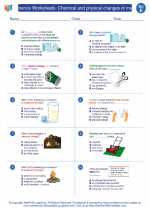Organic Remains
Organic remains are the preserved remnants of once-living organisms that have not been fully decomposed. These remains can provide valuable information about past life on Earth, including the types of organisms that existed, their habitats, and the environmental conditions of the time. Organic remains can be found in various forms, including fossils, mummies, and other types of preserved organisms.
Types of Organic Remains:
- Fossils: Fossils are the preserved remains or traces of ancient organisms, often found in sedimentary rock. They can be the actual remains of the organism (such as bones or shells) or traces of their activity (like footprints or burrows).
- Mummies: Mummies are the preserved bodies of humans or animals, often resulting from natural processes such as desiccation or freezing.
- Amber: Amber is fossilized tree resin that can contain well-preserved organisms, such as insects or plant material, trapped within it.
- Bog Bodies: Bog bodies are human remains that have been naturally mummified in peat bogs, often providing insight into ancient cultures and practices.
Study Guide:
When studying organic remains, it's important to consider the following key points:
- Formation: Understand the processes by which organic remains are preserved, such as fossilization, mummification, or encasement in substances like amber or tar.
- Types of Remains: Familiarize yourself with the different forms of organic remains, including fossils, mummies, and other preserved specimens.
- Importance: Explore the significance of organic remains in understanding Earth's history, evolution of life, and past ecosystems.
- Fieldwork and Research: Learn about the methods used by paleontologists, archaeologists, and other scientists to locate, study, and interpret organic remains.
- Case Studies: Examine specific examples of organic remains, such as famous fossil discoveries or well-preserved mummies, to understand their scientific and cultural value.
By grasping these concepts and engaging with the study guide, you can gain a comprehensive understanding of organic remains and their importance in the study of Earth's history.
.◂Science Worksheets and Study Guides Fifth Grade. Science Worksheets: Chemical and physical changes of matter
Study Guide Chemical and physical changes of matter
Chemical and physical changes of matter  Worksheet/Answer key
Worksheet/Answer key Chemical and physical changes of matter
Chemical and physical changes of matter  Worksheet/Answer key
Worksheet/Answer key Chemical and physical changes of matter
Chemical and physical changes of matter  Worksheet/Answer key
Worksheet/Answer key Chemical and physical changes of matter
Chemical and physical changes of matter  Vocabulary/Answer key
Vocabulary/Answer key Chemical and physical changes of matter
Chemical and physical changes of matter 

 Worksheet/Answer key
Worksheet/Answer key
 Worksheet/Answer key
Worksheet/Answer key
 Worksheet/Answer key
Worksheet/Answer key
 Vocabulary/Answer key
Vocabulary/Answer key

The resources above cover the following skills:
PHYSICAL SCIENCE (NGSS)
Matter and Its Interactions
Students who demonstrate understanding can:
Make observations and measurements to identify materials based on their properties.
Conduct an investigation to determine whether the mixing of two or more substances results in new substances.